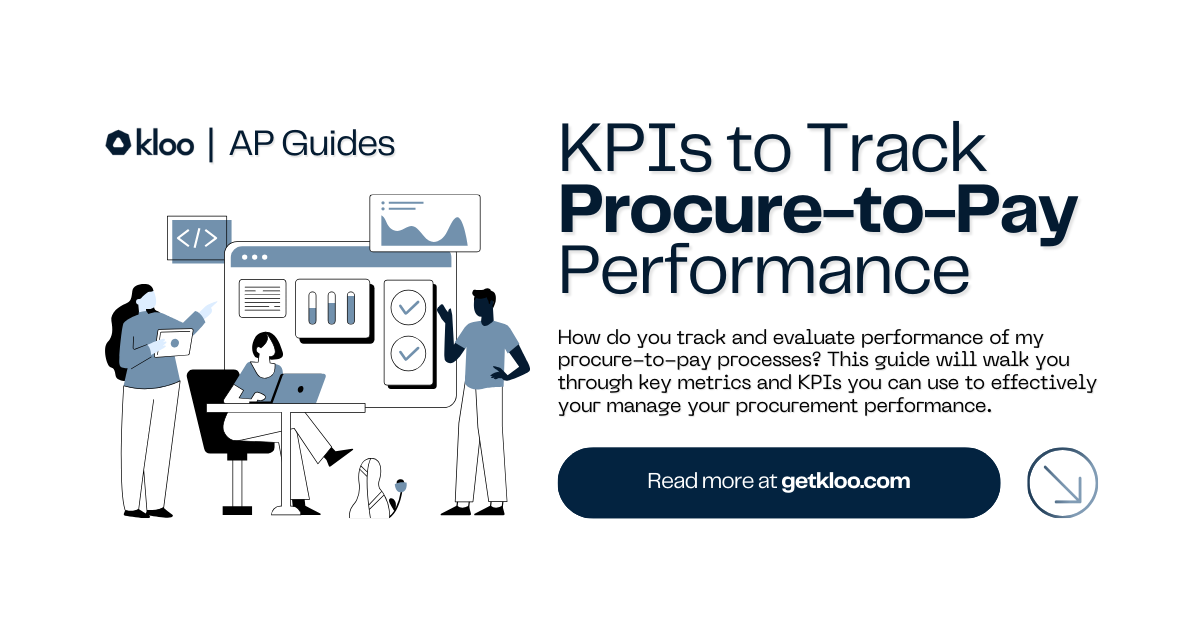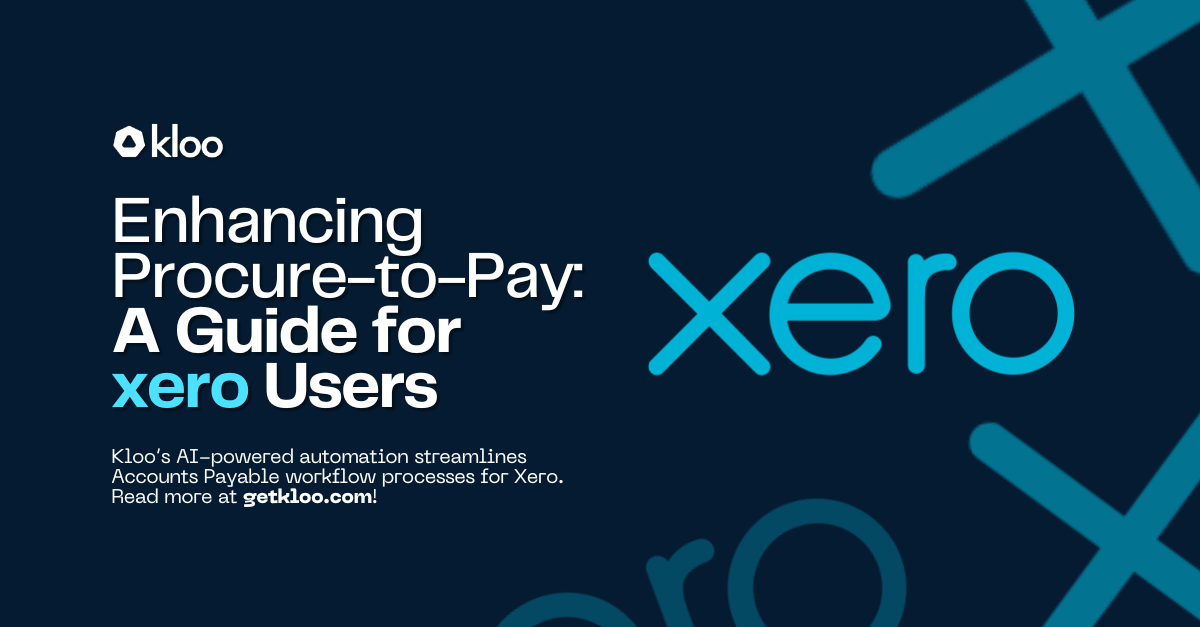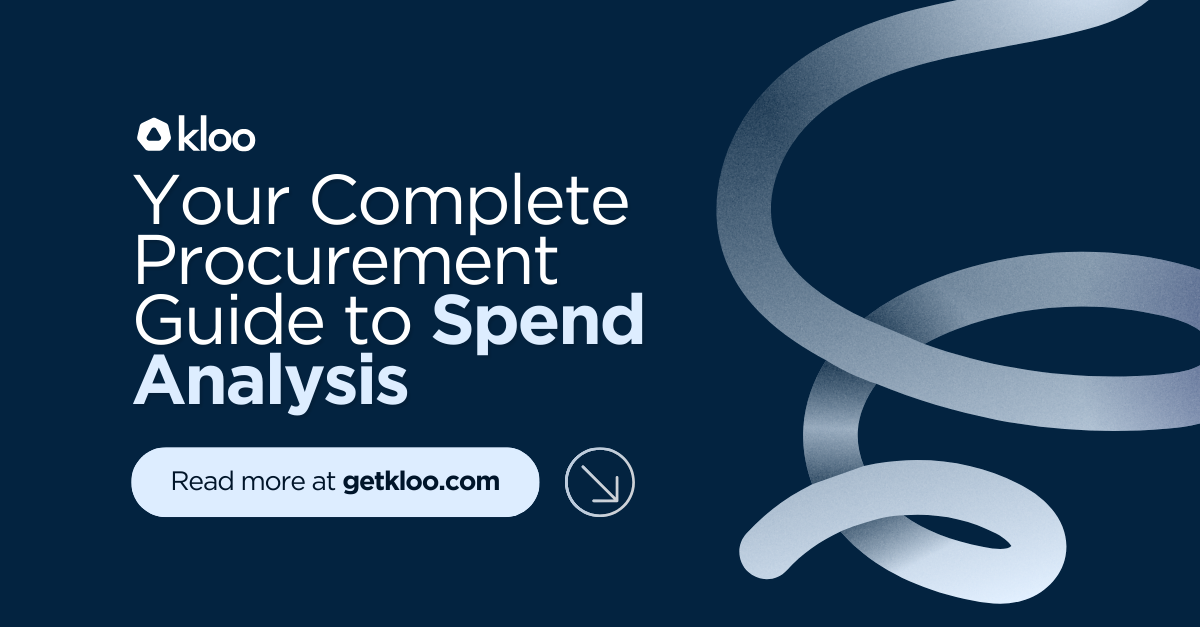
Key Metrics to Track to Evaluate Your Procure-to-Pay Performance

In today’s competitive business environment, the efficiency of your procure-to-pay process can directly impact your company's bottom line. Evaluating the right metrics not only ensures smooth operations but also allows businesses to unlock significant procurement cost reduction. This blog will explore the key metrics essential for assessing your procure-to-pay (P2P) performance, highlight the importance of measuring these metrics, and provide insights into how companies can leverage procure-to-pay software to enhance overall efficiency.
Contents:
- Introduction to Procure to Pay Metrics
- What are Procure to Pay Metrics?
- Why Measuring Procure to Pay Performance is Important
Introduction to Procure-to-Pay Metrics
The procure to pay process (commonly abbreviated as P2P) encompasses everything from identifying the need for goods or services to paying the supplier. By evaluating the performance of this cycle using key metrics, businesses can improve procurement efficiency, reduce errors, and ultimately achieve cost savings over their purchase requisition.
Understanding the key performance indicators (KPIs) that govern this process will allow you to make informed decisions, drive process improvements, and increase overall efficiency in procure to pay management. Whether you're new to procure to pay or seeking to refine your strategy, examining these metrics provides a roadmap to optimising your procurement operations.
What are Procure-to-Pay Metrics?
Procure-to-pay metrics are specific data points used to measure the efficiency and effectiveness of the entire procurement cycle. These metrics track various aspects of the process, including cycle time, cost, accuracy, and supplier performance. By continuously evaluating these metrics, companies can gain insights into potential bottlenecks and inefficiencies in their procurement process.
Why Measuring Procure-to-Pay Performance is Important
Measuring procure-to-pay performance offers several key benefits, including:
- Cost savings: Evaluating metrics like cost per invoice and cost per purchase order highlights areas where you can reduce procurement expenses.
- Process efficiency: Metrics such as order-to-cash cycle time and invoice processing time provide insights into how quickly and efficiently your procurement team operates.
- Improved supplier relationships: Supplier performance ratings and delivery accuracy metrics help you assess vendor reliability, leading to better supplier management.
- Better decision-making: With real-time insights from procure to pay software, businesses can make data-driven decisions that optimise procurement operations.
Now, let’s explore the most critical KPIs for measuring your procure to pay performance.
Key Performance Indicators (KPIs) for Procure-to-Pay
1. Cycle Time Metrics
Cycle time metrics measure the speed and efficiency of the procure to pay process. Tracking these KPIs helps companies identify delays and improve operational efficiency.
- Order-to-Cash Cycle Time: This measures the total time from placing an order to receiving payment from the customer. Shorter cycle times are a sign of a well-optimised procure to pay process.
- Invoice Processing Time: This KPI tracks how long it takes from receiving an invoice to making payment. A faster invoice processing time leads to better supplier relationships and improved cash flow.
2. Cost Metrics
Cost metrics provide insights into how much your company spends on the procurement process. By evaluating these metrics, businesses can discover opportunities for procurement cost reduction.
- Cost per Invoice: This metric calculates the cost associated with processing each invoice, including administrative overhead and software expenses. Lowering this cost is a sign of improved efficiency.
- Cost per Purchase Order: This KPI measures the expense of processing each purchase order. It includes labour, technology, and any indirect costs. Reducing the cost per PO helps cut down procurement costs and increases profitability.
3. Accuracy Metrics
Accuracy metrics focus on the precision and correctness of the procurement process. Tracking these KPIs is essential to minimise errors, which can disrupt business operations.
- Invoice Accuracy Rate: This metric measures the percentage of invoices processed without errors. A high accuracy rate ensures that your procure-to-pay process is efficient and reduces the need for rework.
- Order Accuracy Rate: Similar to invoice accuracy, this KPI tracks the correctness of purchase orders. Ensuring that orders are accurate reduces delays and improves supplier relationships.
Analysing Procurement Efficiency
Procurement efficiency metrics are vital to evaluating how well your procurement team performs, and where improvements can be made.
4. Supplier Lead Time
This metric evaluates how quickly suppliers deliver goods after an order is placed. Monitoring supplier lead time ensures you’re working with reliable suppliers who meet agreed delivery timelines, reducing supply chain risks.
5. Purchase Order Cycle Time
This KPI measures the total time it takes from raising a purchase request to receiving the ordered goods. Shorter cycle times indicate a well-optimised procure-to-pay process and help meet operational deadlines more effectively.
6. Rate of Procurement Compliance
Procurement compliance refers to how well your company adheres to internal procurement policies. A high rate of procurement compliance minimises risks, ensures that procurement is aligned with business objectives, and helps prevent rogue spending.
Assessing Payment Performance
7. On-Time Payment Rate
This metric tracks how often payments to suppliers are made on time. Consistent on-time payments strengthen supplier relationships and can lead to opportunities for better terms and conditions, like discounts for early payments.
8. Early Payment Discounts Utilisation
By tracking how often your organisation takes advantage of early payment discounts, this metric provides insight into cash flow management. Leveraging these discounts can result in significant cost savings over time.
9. Payment Error Rate
This KPI monitors the number of payment errors made during the procure-to-pay process. Reducing payment errors minimises delays and penalties, improving financial and operational performance.
Vendor Management Metrics
Strong supplier relationships are crucial for procurement success, and vendor management metrics help ensure you’re working with the best partners.
10. Supplier Performance Ratings
This metric evaluates the overall performance of suppliers based on factors like quality, timeliness, and cost. By regularly assessing supplier performance, you can maintain high standards and ensure consistent delivery of goods and services.
11. Supplier Delivery Accuracy
This KPI tracks the percentage of deliveries that are made on time and in full. High delivery accuracy is essential for smooth operations, as it reduces the need for follow-ups and mitigates supply chain disruptions.
12. Supplier Relationship Management
Effective supplier relationship management (SRM) is critical for long-term success in procurement. Tracking SRM metrics ensures that suppliers meet expectations and can help you identify areas for improvement in your vendor relationships.
Benchmarking and Comparisons
13. Comparing Internal Metrics to Industry Standards
Benchmarking your procure-to-pay performance against industry standards allows you to understand how your operations stack up against competitors and identify areas for improvement.
14. Benchmarking Against Competitors
By comparing your procure-to-pay metrics to those of competitors, you can gain insights into how well your procurement process performs. This helps identify where you might be falling behind and where you can lead in the market.
Using Data for Improvement
Data-driven decision-making is crucial to optimising your procure-to-pay process. Here are some strategies for leveraging data to improve performance:
- Identifying Trends and Patterns: Analysing procure-to-pay data allows you to spot inefficiencies and trends that may be hindering performance.
- Implementing Changes Based on Metrics: Use the insights gathered from procure-to-pay metrics to make strategic changes, such as automating manual tasks or improving supplier negotiations.
- Leveraging Technology for Better Insights: Procure-to-pay software provides real-time visibility into procurement metrics, enabling businesses to make data-driven decisions that improve efficiency and reduce costs.
Next Steps for Enhancing Procure-to-Pay Performance
Evaluating the right metrics is essential for driving improvement in your procure-to-pay process. By focusing on key KPIs such as cycle time, cost, accuracy, and supplier performance, businesses can achieve significant procurement cost reduction and improve overall efficiency.
To take your procure-to-pay process to the next level, consider implementing procure-to-pay software that offers real-time insights and automation. With the right tools and strategies, your organisation can streamline procurement, improve supplier relationships, and enhance financial performance.
Start by assessing your current procure-to-pay metrics and identifying areas for improvement. Leverage data-driven insights to make informed changes and consider implementing a robust procure-to-pay platform to optimise your entire procurement cycle.
To see a procure-to-pay automation software in action, visit Kloo's Purchasing Copilot product page.
Let's get started


